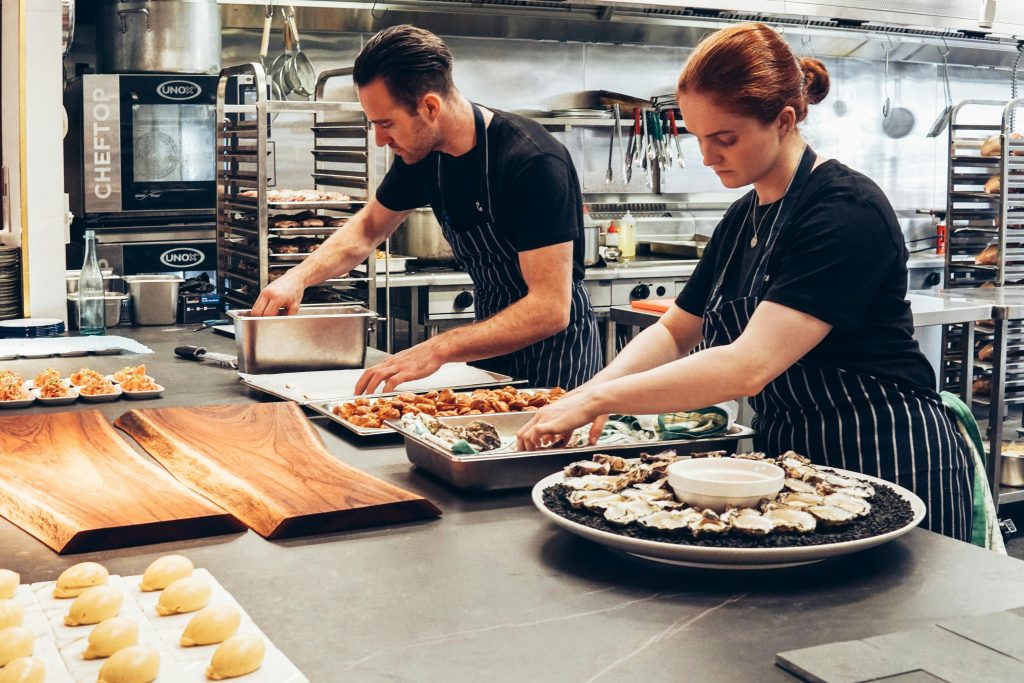Food safety is key to preventing foodborne illnesses and keeping everyone who eats your food healthy. Contamination can happen at any stage of food preparation, from handling to storage. By following some fundamental practices, you can minimize the risk of contamination and keep your kitchen safe. Here are essential food safety tips you need to know.
1. Maintain Safe Food Temperatures
One of the most critical aspects of food safety is keeping your food at the correct temperatures. Bacteria grow rapidly in the “danger zone” between 40°F and 140°F. To prevent spoilage and reduce the risk of illness, ensure that cold foods are kept at 40°F or colder and hot foods are maintained at 140°F or warmer.
For instance, using a commercial food warmer display case can help keep hot foods at the proper temperature during service, ensuring they remain at 140°F or warmer. This is particularly important in buffet settings or foodservice operations where maintaining optimal temperatures is crucial for food safety. Using a food thermometer can help you monitor temperatures accurately.
Moreover, make sure to refrigerate leftovers and hot foods promptly. Use shallow pans or containers to facilitate faster cooling, which helps prevent bacteria growth. In addition, thaw frozen foods in the refrigerator rather than on countertops or in warm water. This ensures that the food remains at a safe temperature throughout the thawing process.
2. Use Proper Food Preparation Equipment
The equipment you use in the kitchen plays a vital role in maintaining food safety. It’s essential to use tools and utensils that can be properly cleaned and sanitized. Key tips include:
Cutting Boards:
Opt for non-porous cutting boards made of materials such as glass, Formica, or plastic. Wooden boards can harbor bacteria in their pores, making them less hygienic. Use separate boards for raw meats and ready-to-eat foods to avoid cross-contamination.
Utensils and Dishes:
Always use clean and sanitized utensils and dishes. After washing, ensure that they are dried thoroughly. When washing by hand, use sanitizers and disinfectants approved for food contact surfaces.
3. Avoid Microwaving with Plastic
Many people unknowingly expose themselves to harmful substances by microwaving food in plastic containers or using plastic wraps. High heat can cause plastics to release toxins, such as dioxins, which are harmful and potentially carcinogenic. Instead, use microwave-safe glass or ceramic containers for heating food. For covering dishes, opt for paper towels rather than plastic wraps.
4. Proper Hand Washing
One of the simplest yet most effective ways to prevent the spread of germs is through proper hand washing. Hands can pick up bacteria from various sources, including contaminated surfaces, animals, or other people. Frequent hand washing is essential, especially before, during, and after food preparation, as well as before eating and after using the bathroom. Here are the steps to effective hand washing:
- Wet Hands: Begin by wetting your hands with clean, running water.
- Apply Soap: Use liquid or bar soap, placing bar soap on a rack to drain.
- Scrub: Rub your hands vigorously together for 10-15 seconds, making sure to clean all surfaces.
- Rinse and Dry: Rinse your hands well under clean, running water and dry them using a clean towel.
5. Clean and Sanitize Effectively
Cleaning and sanitizing are distinct but equally important processes. Cleaning removes food debris and visible dirt, while sanitizing kills bacteria that may be present on surfaces. To sanitize effectively:
Use Sanitizers:
Common sanitizers include bleach solutions. A mixture of 1/4 cup of bleach per gallon of water is an effective sanitizing agent for surfaces.
Dishwashers:
Dishwashers are excellent for sanitizing dishes, as they use hot water (generally over 140°F) that is effective at killing bacteria. Ensure your dishwasher is functioning correctly to maintain proper sanitation.
6. Avoid Handling Food When Ill
If you are experiencing gastrointestinal symptoms, such as diarrhea or vomiting, or have any infected skin sores or open cuts, it’s crucial to avoid handling or preparing food. Even minor cuts should be covered with non-porous gloves to prevent contamination.
In Closing
By following these essential food safety practices—maintaining safe temperatures, using proper equipment, avoiding harmful plastics, practicing thorough hand washing, and ensuring effective cleaning and sanitizing—you can significantly reduce the risk of foodborne illnesses. Implement these tips to keep your kitchen safe and your food enjoyable for everyone. Remember, good food safety habits are what make a healthy kitchen and a happy dining experience.



